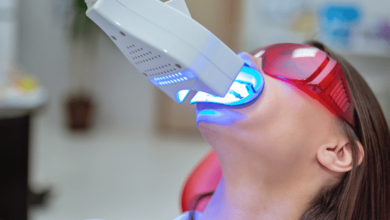What Do You Think A Bridge Is?

Hello, DentAbroaders! We’ve realized that some of you guys are a bit confused about “what a bridge is”. (No, not the usual bridges, i mean the dental bridges). So we decided to talk about dental bridges today.
First of all, in order to have a bridgework, you should have a missing tooth. If you do not have a missing tooth then you’re at the wrong place (except for the ones who are seeking information for their loved ones. We love you guys, please stay. This world keeps spinning, thanks to you).
When you have one (or more) tooth extracted, there’s going to be a gap in its place. You’ll have two options to fill that gap. One, having an implant placed in there. Two, having a bridgework done. Implants are the subject of another article and they’re not always suitable for everyone. So we’re skipping that subject for now.
When we think of a bridge, we could easily say that it has to have two anchors. One in the front and one at the back. A dental bridge works in this way as well. A proper dental bridge has to have two natural teeth as its anchors, one in the front and one at the back. So you can say that a dental bridge is more suitable for filling a gap which is in between your natural teeth. Like this; 
In this scenario, your dentist would file down (at least) two of your natural teeth that are adjacent to your gap, as the anchors. At this point, i’d like you to imagine a dental crown. Now, imagine three of them, attached to one another. Congratulations, you’ve just imagined a dental bridge! In real life it’s something like this; Inside crowns which are on the both ends of the bridge are shaped to fit your filed down natural teeth (anchors). And the third piece that is placed in the middle is a solid one which fits perfectly into your gap, a full tooth-shaped crown. This whole unit is fitted on the anchors and expected to stay there and function for years.
Sometimes you get your tooth which is at the very back of your teeth row extracted or you get more than one tooth extracted. When, somehow, your missing tooth’s gap does not take place in the middle of two anchors and you have no other options available -such as implants- then some dentists still might be able to prepare a bridge. In this case, since we don’t have two anchors taking place in the front and at the back, your dentist might wanna use the two natural teeth in the front (if you have two in the front) as anchors. This is a less preferable situation for some technical reasons and for your own good of course. But when there’s no other option, this might be worth thinking about. But you should always remember that your dentist is the one to determine whether you’re suitable for this kind of a treatment.
You might have a gap that is bigger than i’ve just described, you may wonder if it’s still possible to have bridgework when you’ve got a bigger gap. Well, i must say that there are always some limits for everything. This is why i’ve just told you that your dentist should be the one who decides. Sometimes it is possible and sometimes it is not. He/She should make some measurements and calculations, every detail is important. If your anchors are strong enough to hold the bridge, if the gap is too big to prepare a strong bridge, and lots of other factors should be considered.
As you can imagine, there are pros and cons when having a dental bridge. For those who are wondering those pros and cons you can jump into the article IF I HAVE A MISSING TOOTH, DO I NEED AN IMPLANT OR A BRIDGE? to learn them.
I’ve tried to explain “what a dental bridge is”, today. I hope you guys can imagine what it is from what i could describe. For the ones who need further guidance, you know you can always contact us. Team DentAbroad will always be delighted to help you. We love you guys, please take care and be safe out there!



